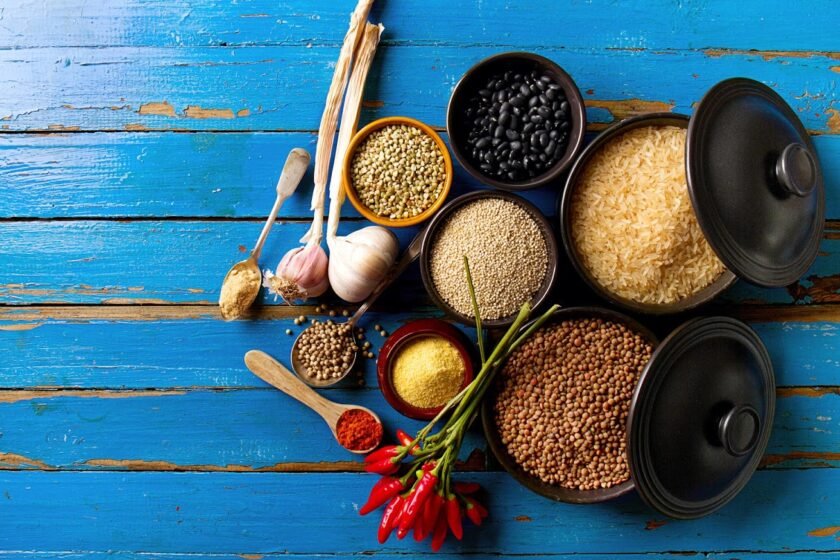Carbohydrates – Friend or Foe
One of the most abundantly found nutrients in Nature, carbohydrates have played a HUGE role in the evolution of man.
It is our increased intake of carbohydrates that led to the development of our brains and hence all of this progress.
Over the last 50 years, however, our lifestyle has changed drastically. We have shifted away from our hunter-gatherer lifestyle to a more sedentary indoor lifestyle, this shift has led to a change in the nutrient requirement of our body.
The amount and form of carbohydrates we consume needs revision and nutritionists from all over the world are currently on a mission to get clarity on just this. What we do know is:
-
- Carbohydrates are the body’s preferred source of energy. So all the everyday activities one performs, something as small as a smile, will require carbohydrates to be carried out. There are alternate processes for this, but carbohydrates are the primary energy source.
- Your brain will use up a huge chunk of the glucose you eat.
- Carbohydrates are still one of the most abundant nutrients in Nature which indicates that our body is designed to eat carbs.
- Your activity level and genetic history are the deciding factors for the number of carbs you consume.
- Carbohydrates reduce stress
- They improve the quality of sleep

Since we are moving a lot less than we did till half a century ago, what needs to change is the amount and form of carbohydrates. First, some basics for you!
Carbohydrates are short to long chains of sugar molecules chained together. This could be anything from 2 molecules to thousands. The longer the chain, the longer it takes for your body to break it down and release glucose from it. Based on the chain length, carbohydrates are of 3 types:
- Disaccharides – 2 molecules (sucrose, lactose) these are very quick to break down, cause an almost instant release of glucose and hence a quick surge in blood glucose levels. The faster and higher the surge, the more fat deposition for sedentary individuals. (this not applicable for athletes, dancers, fitness enthusiasts and other active individuals).
- Oligosachharides – 3-9 molecules chained together. This group is gaining a lot of attention nowadays before of their impact on our digestive system. Most of these cannot be completely digested by our digestive system. So they end up acting as food for bacteria in our gut, leading to a healthier gut microbiome. A healthier gut = a healthier life
- Polysaccharides – all your starches, pectins, etc fall in this category. Generally, this group leads a slow release of energy (not as slow as fat or proteins but slower than the first 2 groups of carbohydrates). All your rotis, pastas, dals will have polysaccharides of different types of sizes. These forms are generally less processed and come wrapped up in fibre. Both these traits make this the healthier choice for our lifestyle today.

Coming to some of the most common questions we all have,
Are carbohydrates bad?
No, they are not bad at all. As mentioned above, your body, especially your brain, still need carbohydrates to function properly. However, the number of carbohydrates you eat and their timing key.
What all is included in carbohydrates?
Taking the 3 groups mentioned above forward, understand one thing – carbs raise your blood sugar levels by releasing the chained sugar molecules. The speed at which they do so is the most important aspect of health, weight, fat, insulin, hormones, everything! For most of us sedentary individuals, we need this to be as slow as possible. The slow the rise in blood glucose levels, the fewer chances of all the metabolic havoc. This speed can be determined by something known as the Glycemic Index of Foods. Each food has been given a number. The lower the number the better it is.
Carbohydrates can be segregated into 3 categories:
Low Glycemic Index – foods that cause a slow and sustained release of glucose into the blood. These include all fats and most proteins. All whole grains in their natural, unprocessed form fall in this category. Also, juice fruits like Apples, Pears, Berries, Oranges fall in this category.
All vegetables and nuts fall in this category as well. Just remember, in most cases, the more processed a food, the lower its chances of falling in this group.
Medium Glycemic Index – moderate speed of glucose release. Other than certain fruits like banana, mango, pineapple, musk melon, papaya, figs, raisins, this group largely comprises semi or home processed cereals and dal based dishes. Idli, dhokla, dosa, handva, roti, paratha will all come in this category. Fermentation, roasting, soaking, baking tends to do a semi break down of the starch molecules leading to an increase in glycemic index.
High Glycemic Index – sugars, desserts, watermelon, fruit juices, white rice, baked sweet potato are all in this category. They cause an instant surge in blood sugar levels leading to a sudden rise followed by crash and fat deposition. This is the group that needs to be eliminated. If you must eat something from this group, then ALWAYS combine it with a good fat like ghee, nuts, avocado to reduce control the speed of the rise.
Although almost all plant-based foods have some amount of carbohydrates in them, in everyday conversations carbohydrates is used for things like cereals, starchy vegetables and fruits.
Which carbs are good and which are bad?
This depends on the time of day and activity level.
- Daytime (before sunset) – a moderate intake of carbohydrates is good. After sunset, avoid eating cereals, fruits and sugars completely.
- Before a workout – a good amount of complex carbohydrates (polysaccharide group) is required. Include things like millets, oats, buckwheat, amaranth, starchy vegetables about 90-120 minutes before an intense workout. If you are closer to your workout, then these foods will reduce your performance, in this case, have fruits like orange, apple, pomegranate, berries, etc.
- After a workout or a match – you want easier to digest forms of carbohydrates here. Eat idli, dosa, dhokla, rice dishes, potato, baked sweet potato or sweeter fruits like banana, papaya, watermelon, grapes, chickoo, custard apple.
- Lunch – this is the best time to consume carbohydrates for the day! Your brain is working in full form, plus you need fuel for moving around throughout the day. Always have a portion of carbohydrates in your lunch.
In certain health situations like PCOS, Diabetes, Hypothyroidism, Heart Issues, Hyperuricemia, Anxiety, Gut Health issues, and other lifestyle disorders, a lot of this changes.
If you are living with any health issue, it is best to visit a nutritionist at least once to get some clarity on your unique requirements. With my one on one clients, I generally identify a list of “safe carbohydrates” which my clients then use as a guideline for years on end.
How much to eat?
This one varies from person to person. But, you can start with around 2-3 portions per day if you are looking at fat loss and then take it up to 4-5 portions.
If they are harmful, how come Indian meals are so carbohydrate-heavy?
As I mentioned before, our lifestyle was very active in the past. We needed that kind of intake back then. Additionally, back then everything was organic, unprocessed and people were eating the sweet, unhealthy stuff quite sparingly.
Today, we are eating directly from boxes and packets. These foods have hidden as well as direct sugars that we are ignoring or not aware of.
Our life has changed, and although we have progressed in every other aspect, we are still to adapt our food habits to this new life. Changing your carbohydrate intake is the first step in building a more sustainable and logical diet for us.
FINAL THOUGHTS
When it comes to carbohydrates, just remember, it is one of the most crucial elements of a healthy diet. The way you plan this element can make all the difference. In this article, I have tried to give you the basic knowledge that I think everyone should have. But the way you apply this knowledge will need to be customised if you have a very specific goal. For general well-being, this article is a great starting point for you.








Pingback: B for Banana | A to Z of Indian Foods
Pingback: C for Coconut | A to Z of Indian Foods